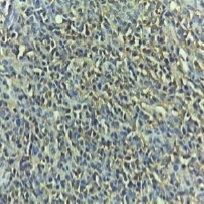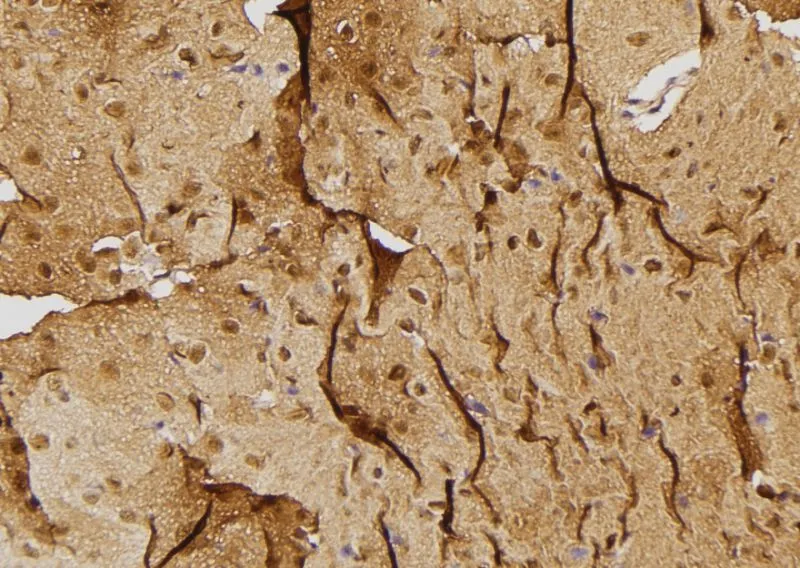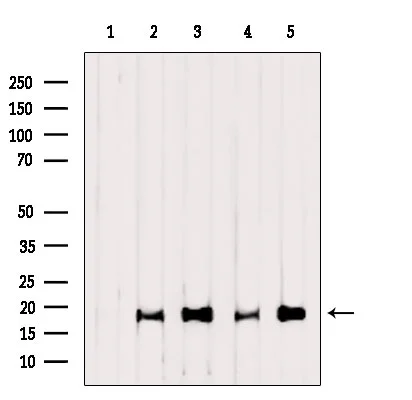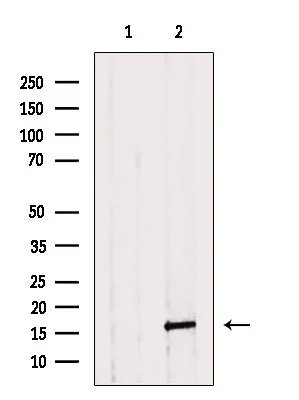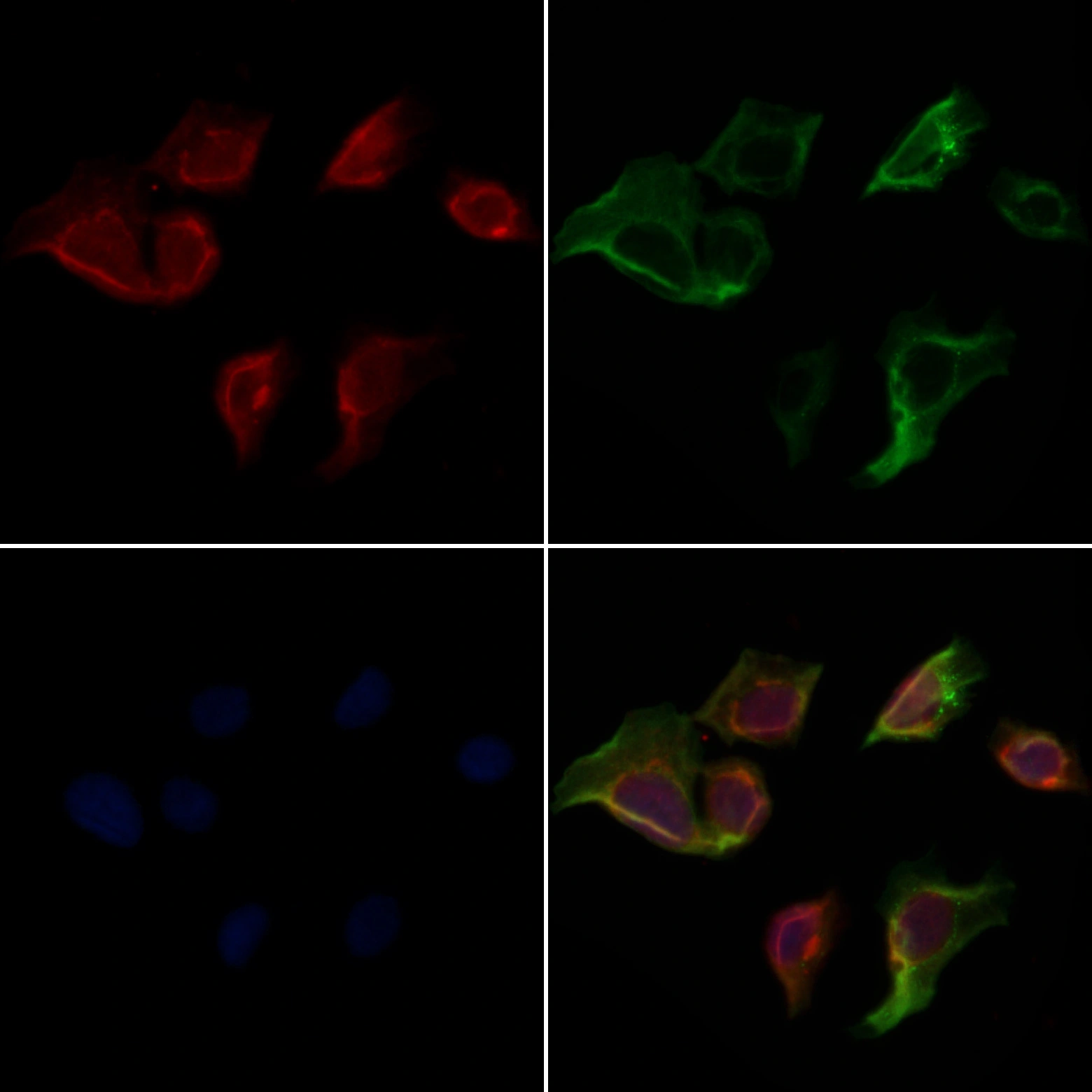
ICC/IF analysis of PFA-fixed HeLa cells using GTX03281 Caspase 3 (cleaved Asp175) antibody. Red : Primary antibody Green : beta tubulin Blue : DAPI Permeabilization : 0.1% Triton X-100 Dilution : 1:200
Caspase 3 (cleaved Asp175) antibody
GTX03281
ApplicationsImmunoFluorescence, Western Blot, ImmunoCytoChemistry, ImmunoHistoChemistry, ImmunoHistoChemistry Paraffin
Product group Antibodies
ReactivityHuman, Mouse
TargetCASP3
Overview
- SupplierGeneTex
- Product NameCaspase 3 (cleaved Asp175) antibody
- Delivery Days Customer9
- Application Supplier NoteWB: 1:500-1:2000. ICC/IF: 1:100-1:500. IHC-P: 1:50-1:200. *Optimal dilutions/concentrations should be determined by the researcher.Not tested in other applications.
- ApplicationsImmunoFluorescence, Western Blot, ImmunoCytoChemistry, ImmunoHistoChemistry, ImmunoHistoChemistry Paraffin
- CertificationResearch Use Only
- ClonalityPolyclonal
- Concentration1 mg/ml
- ConjugateUnconjugated
- Gene ID836
- Target nameCASP3
- Target descriptioncaspase 3
- Target synonymsapopain; CASP-3; caspase 3, apoptosis-related cysteine peptidase; caspase 3, apoptosis-related cysteine protease; caspase-3; CPP32; CPP-32; CPP32B; cysteine protease CPP32; PARP cleavage protease; procaspase3; protein Yama; SCA-1; SREBP cleavage activity 1
- HostRabbit
- IsotypeIgG
- Protein IDP42574
- Protein NameCaspase-3
- Scientific DescriptionThe protein encoded by this gene is a cysteine-aspartic acid protease that plays a central role in the execution-phase of cell apoptosis. The encoded protein cleaves and inactivates poly(ADP-ribose) polymerase while it cleaves and activates sterol regulatory element binding proteins as well as caspases 6, 7, and 9. This protein itself is processed by caspases 8, 9, and 10. It is the predominant caspase involved in the cleavage of amyloid-beta 4A precursor protein, which is associated with neuronal death in Alzheimers disease. [provided by RefSeq, Aug 2017]
- ReactivityHuman, Mouse
- Storage Instruction-20°C or -80°C,2°C to 8°C
- UNSPSC12352203
References
- Interleukin 32 participates in cardiomyocyte-induced oxidative stress, inflammation and apoptosis during hypoxia/reoxygenation via the NOD2/NOX2/MAPK signaling pathway.Read more

